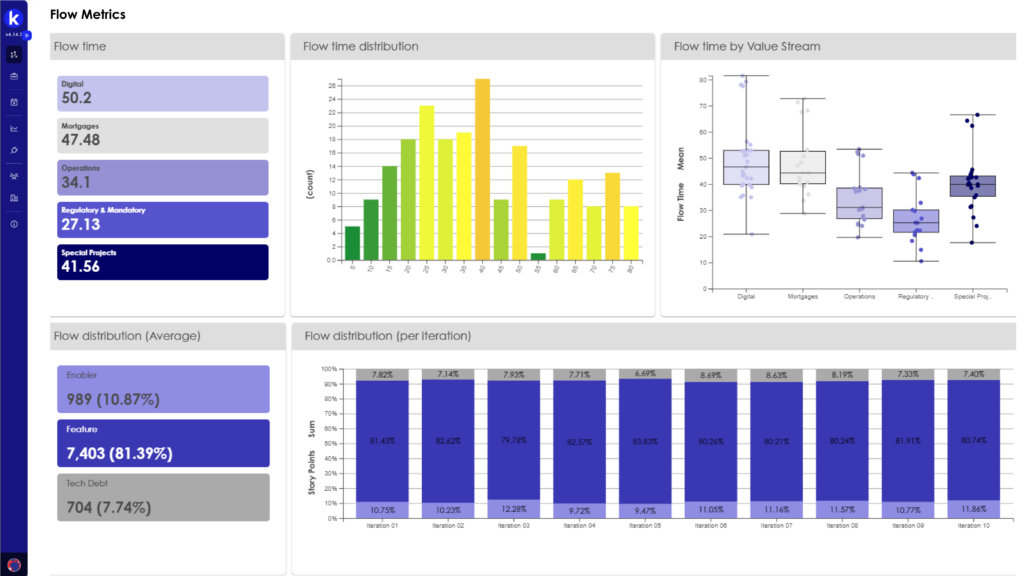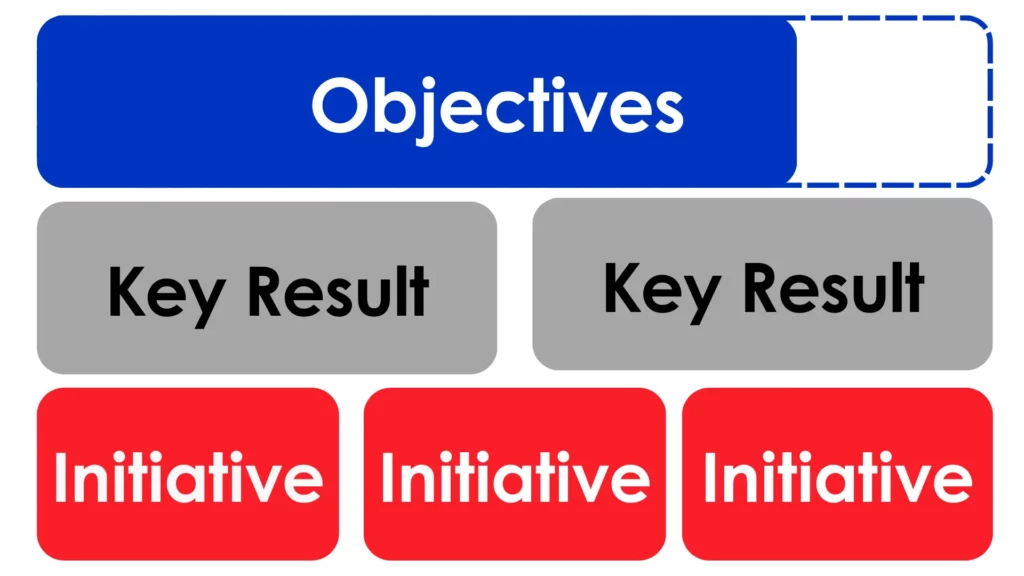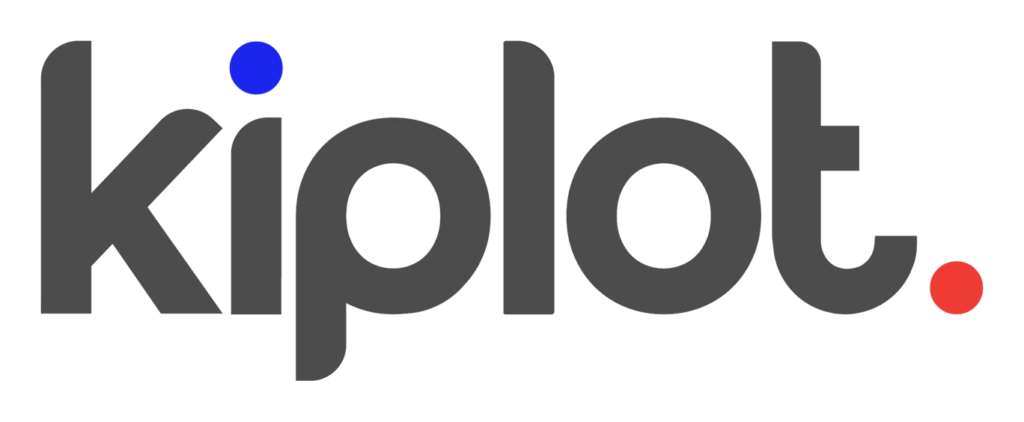Introduction
Agile has become one of the go-to frameworks in the enterprise landscape for teams looking to deliver value quickly and adapt to evolving market demands. While Agile offers flexibility and rapid delivery, it can unintentionally pull teams away from long-term goals if strategic oversight isn't maintained. Without a framework that ties Agile practices to strategic objectives, organizations risk delivering results that may not contribute meaningfully to their broader vision.
To address this challenge, strategic portfolio planning provides a structured approach that aligns Agile efforts with long-term business objectives. This approach is particularly valuable for enterprises managing complex portfolios across multiple teams, where balancing flexibility and strategic focus is critical. By connecting day-to-day execution to high-level goals, strategic portfolio planning ensures that every initiative contributes to the company's broader vision, offering the oversight needed to maintain agility while creating long-term value.
In this article, we’ll explore key strategies to bring strategic alignment to agile transformations, helping you ensure that every sprint, program increment, and initiative contributes to your enterprise's strategic direction.
Balancing short-term agility with long-term vision
A shared challenge facing all transformation and delivery leaders is finding the right balance between focusing on long-term strategic objectives and addressing the immediate needs of the organization. Agile teams are often laser-focused on delivering short-term outcomes, but without the right governance in place, this can create misalignment with the broader organizational goals. The solution lies in implementing governance models that support flexibility at the team level while maintaining alignment with long-term strategy.
Below are key principles that help build a governance model that fosters both agility and strategic oversight.
1. Hybrid Governance Models for Flexibility and Strategic Alignment
Traditional governance structures are often too rigid to accommodate the adaptive nature of Agile teams, but completely removing governance can lead to chaos. This dual structure allows for flexibility at the team level while ensuring that every pivot or adjustment feeds into the overarching business strategy. This prevents the chaos of Agile practices going in different directions, ensuring that short-term decisions remain strategically aligned.
In this model, strategic direction is set at the portfolio level while operational execution happens at the team level. Leaders should define high-level strategic priorities and create the frameworks that enable teams to innovate within those boundaries. This allows for responsive execution, while keeping the portfolio aligned with the company’s larger objectives.
A useful approach is the concept of a dual operating system: one side focuses on long-term strategic planning, ensuring that teams are working toward overarching business goals, while the other side emphasizes adaptability, allowing teams to pivot and respond to emerging challenges and opportunities.
2. Strategic Guardrails: Providing Clarity Without Stifling Innovation
To maintain alignment without micromanaging, teams need clear boundaries—strategic guardrails that provide a sense of direction without being overly prescriptive. Strategic guardrails don’t limit creativity—they serve as a framework within which teams can innovate, ensuring their efforts remain aligned with high-level goals. By offering flexibility in execution but clarity in outcomes, leaders can maintain focus without constraining the innovation associated with Agile.
Instead of specifying how teams should accomplish their work, leaders should define what needs to be achieved.
For example, instead of asking a team to build a specific feature, you can task them with improving a key performance metric, such as customer retention or operational efficiency. This empowers teams to figure out the best way to reach those goals while staying aligned with the larger business outcomes.
The strength of this approach lies in the balance between autonomy and accountability, a key principle of Agile. Teams are given the freedom to innovate within a clear framework, ensuring their work continues to support the company’s long-term objectives.
3. Continuous Visibility Through Real-Time Reporting
A major risk in portfolio governance is losing granular visibility into how teams are performing and how their work ties back to strategic goals. Traditional reporting structures, which often rely on periodic updates, can create lagging insights. A better solution is to implement dynamic reporting dashboards that provide ongoing transparency into key portfolio metrics.

This immediacy of reporting allows leaders to adjust priorities as Agile teams deliver, ensuring that strategic objectives aren’t compromised in the pursuit of rapid execution. It provides the feedback needed to keep fast-moving initiatives aligned with long-term goals. Dashboards should track relevant KPIs that are tied directly to business outcomes, such as time-to-market, customer satisfaction, or revenue impact. This level of transparency allows leadership to stay connected to day-to-day execution without needing to micromanage, while also giving teams the feedback they need to course-correct if necessary.
4. Using OKRs to Tie Agile Execution to Strategic Goals
OKRs (Objectives and Key Results) are an effective way to bridge the gap between short-term execution and long-term strategic objectives. By setting clear, measurable outcomes that are tied to business goals, OKRs bridge the short-term iterative nature of Agile with long-term strategic planning by providing a continuous check on whether team-level work contributes to higher-level business outcomes.
At the portfolio level, leaders should define high-level OKRs that cascade down to teams. This ensures that while teams are free to execute in their own way, their efforts are always aligned with the company’s overarching strategy. For instance, a portfolio-level OKR could be to "increase market share by 10%," with individual teams contributing through specific initiatives such as product development, customer acquisition, or operational improvements.
image:medium

Regularly reviewing OKRs at the portfolio level helps maintain alignment, allowing teams to adjust their focus as needed while ensuring their work continues to drive the business forward.
5. Rolling-Wave Planning for Long-Term Agility
Long-term planning is essential for maintaining strategic focus, but rigid, annual planning cycles are often misaligned with the more dynamic nature of Agile execution. Instead of committing to a fixed plan for the entire year, consider implementing rolling-wave planning—an approach that allows for both long-term vision and short-term adaptability.
Rolling-wave planning allows for iterative updates as Agile teams adapt to new information, while simultaneously maintaining focus on long-term strategic priorities.. This approach ensures that the long-term strategy remains intact, while allowing for necessary adjustments in the short term. Teams can work on immediate priorities while still contributing to the bigger picture, and leaders can refine the strategic direction as new information becomes available.
By using rolling-wave planning, organizations can maintain the right balance between achieving immediate results and keeping the portfolio aligned with long-term business goals.
Empower teams to be Agile whilst maintaining strategic oversight
In Agile organizations, transformation leaders face the challenge of empowering teams to innovate and deliver while ensuring alignment with broader business goals. Striking the right balance between autonomy and oversight is crucial—leaders must foster an environment where teams have the freedom to make decisions while ensuring the organization’s strategic vision remains intact.
Success comes from shifting away from traditional command-and-control leadership styles and focusing on trust, influence, and strategic guidance.
Empowered teams who understand the company’s long-term vision are better equipped to innovate in ways that contribute meaningfully to the organization’s goals. By fostering accountability and trust, leaders can ensure that teams' agility doesn't come at the cost of strategic alignment.
1. Lead Through Influence, Not Authority
Rather than relying on authority, effective leaders guide teams by influence, building a culture where teams understand the strategic importance of their work. When teams see how their efforts contribute to larger goals, they are naturally motivated to align with those objectives—without needing constant supervision.
2. Shift from Manager to Coach
Leaders should transition from being task managers to acting as coaches. Instead of directing the details of execution, the focus should be on guiding teams toward desired outcomes. By offering support, sharing knowledge, and providing constructive feedback, leaders enable teams to experiment, learn from mistakes, and ultimately grow. This coaching mentality helps foster accountability, as teams feel empowered to own their work while understanding how it ties back to the business objectives.
Encouraging an experimental mindset is key—when teams are free to test ideas and learn from failures, they gain the confidence to take initiative, which directly impacts innovation and productivity.
3. Create a Culture of Accountability Without Micromanagement
Leaders often struggle to maintain visibility and control without micromanaging. The solution lies in establishing a culture of accountability where teams are responsible for delivering results, and leaders provide guidance when needed. Outcome-based reviews are a powerful tool for fostering this accountability.
In these reviews, teams report on their progress toward the defined business outcomes rather than providing updates on tasks or processes. This allows leaders to maintain strategic oversight while empowering teams to manage the day-to-day execution of their work. It shifts the focus from constant check-ins to a results-driven dialogue.
4. Delegate Responsibility While Retaining Strategic Control
Delegating responsibility to teams is essential for fostering agility, but delegation doesn’t mean losing sight of the bigger picture. Leaders must establish decision-making frameworks that allow teams to take ownership of decisions while staying aligned with overall portfolio goals.
One way to achieve this is by setting clear boundaries within which teams can make decisions—whether those boundaries are financial, resource-based, or time-related. This approach gives teams the flexibility to operate independently while ensuring that their decisions support the broader strategic direction.
Distributed decision-making frameworks ensure that the leadership retains strategic control over the portfolio’s trajectory while empowering teams to make the operational decisions necessary for execution.
5. Build Trust Through Open, Transparent Communication
Trust is the foundation of any successful Agile transformation. Leaders can foster trust by promoting open, transparent communication across the organization. Transparency ensures that teams and leaders remain aligned, with both sides having full visibility into progress, risks, and challenges.
Leaders should encourage teams to openly share their challenges and successes. By creating an environment where there is no fear of blame, teams can surface issues early, enabling leaders to provide timely support and guidance. This level of transparency fosters trust while allowing leadership to intervene only when necessary, avoiding micromanagement.
6. Continuously Evolve Leadership Practices
Leadership in an Agile environment requires constant adaptation. As the organization and portfolio evolve, so too must the leadership approach. Effective leaders regularly reassess how well their strategies are supporting the organization’s goals and team performance.
One way to do this is through leadership retrospectives. Similar to Agile project retrospectives, these sessions allow leaders to reflect on their own practices, gather feedback from teams, and make necessary adjustments. By continuously iterating on their leadership approach, transformation leaders can ensure they are providing the right level of support as the organization grows.
Embrace value-based prioritization to ensure strategic execution
To maintain focus on initiatives that truly deliver strategic value, delivery leaders need a structured approach for prioritizing work based on its potential to deliver business value. This is where value-based prioritization and the Weighted Shortest Job First (WSJF) method come into play.
Value-based prioritization ensures that Agile teams are not just moving quickly, but that they’re delivering the highest strategic value to the organization. By focusing on initiatives that provide maximum impact, leaders can prevent the pursuit of agility from diverting teams away from critical long-term goals.
1. Define Value in the Context of Your Strategic Goals
Before applying WSJF or any other prioritization technique, it’s critical to define what "value" means for your organization. Value can vary depending on your strategic goals—whether it’s focused on revenue growth, customer satisfaction, operational efficiency, or competitive advantage.
Leaders should work with stakeholders to establish clear value criteria that align with the organization’s long-term objectives. By ensuring that these criteria reflect business priorities, you can assess the potential impact of each initiative on the organization’s strategic goals.
Examples of value criteria include:
- Revenue generation: Does the initiative have a direct impact on increasing sales or revenue?
- Customer satisfaction: Will this initiative improve the overall customer experience or increase customer loyalty?
- Operational efficiency: Does the initiative streamline internal processes or reduce costs?
- Competitive advantage: Does it strengthen your position in the market or create differentiation?
2. Using WSJF to Prioritize High-Value, Low-Effort Initiatives
Once value is clearly defined, WSJF provides a powerful framework for prioritizing initiatives based on the trade-off between value and the cost of delay. WSJF helps leaders focus on work that delivers maximum business value in the shortest possible time, ensuring that Agile teams are not only responsive but also aligned with strategic priorities.
WSJF is calculated by dividing the Cost of Delay by the Job Size (or effort required). The higher the WSJF score, the more urgent the initiative is, and the more likely it is to deliver significant value quickly. This approach ensures that resources are directed toward initiatives that maximize value while minimizing the time and effort required.
Cost of Delay is typically broken down into three components:
- User/Business Value: How valuable is this initiative to customers or the business?
- Time Criticality: How urgent is this initiative, and what is the cost of not completing it soon?
- Risk Reduction/Opportunity Enablement: Will this initiative reduce risks or open up new opportunities?
Job Size refers to the relative effort required to complete the initiative, including factors such as team capacity and complexity. By evaluating both the value and effort, WSJF ensures that teams focus on initiatives with the highest return on investment.
For example, if two initiatives are expected to deliver similar business value, but one can be completed in a third of the time, the WSJF framework would prioritize the faster, more efficient project.
3. Align WSJF with Long-Term Strategic Objectives
While WSJF is effective for ensuring that Agile teams can deliver value quickly, it’s important to regularly review how the outputs of prioritized initiatives align with your broader strategic goals. WSJF helps teams balance short-term agility with long-term vision by ensuring that each sprint or iteration contributes meaningfully to business objectives.
To keep strategic alignment in check, leaders should periodically reassess their value criteria and make adjustments as needed. For example, if customer satisfaction becomes a critical focus due to market changes, the WSJF formula can be adjusted to give higher weight to initiatives that directly impact customer experience. This dynamic approach allows organizations to remain agile while staying focused on evolving business needs.
Linking WSJF to strategic focus:
- WSJF ensures that teams remain agile by focusing on high-value, low-effort work that moves quickly through the pipeline.
- It maintains strategic alignment by weighting the impact of each initiative based on its contribution to business outcomes, ensuring resources are directed toward the most critical efforts.
- By continuously evaluating both value and effort, WSJF keeps the organization focused on delivering outcomes that drive long-term success, while adapting to immediate opportunities and challenges.
4. Balance Short-Term Wins with Long-Term Objectives
While WSJF ensures that teams are working on high-impact initiatives in the short term, it’s essential to maintain a balance between immediate results and long-term strategic priorities. Leaders must ensure that the pursuit of short-term wins does not detract from the company’s larger goals.
This can be done by incorporating a mix of initiatives into the portfolio—some that deliver quick wins with minimal effort, and others that might take longer but provide significant long-term value. Regularly reassessing the portfolio through the lens of WSJF ensures that the organization maintains agility without sacrificing its strategic direction.
💡 Learn more about WSJF and other key prioritization methods in Agile.
Conclusion
Maintaining agility while delivering value in line with long-term strategic goals requires more than just Agile practices—it demands a cohesive framework that guides teams toward meaningful outcomes. Strategic portfolio planning provides the structure and oversight needed to align day-to-day execution with the broader business vision, ensuring that every initiative contributes to sustained success.
Throughout this article, we've explored key strategies that help organizations balance short-term adaptability with long-term objectives. From implementing hybrid governance models and strategic guardrails to leveraging real-time reporting and value-based prioritization frameworks like WSJF, these approaches enable leaders to empower teams without losing sight of strategic priorities.
By fostering a culture of autonomy guided by clear strategic goals, regularly aligning initiatives with OKRs, and using tools like rolling-wave planning to adapt in real time, organizations can ensure that Agile execution stays on track with long-term goals. The result is an organization that remains flexible enough to respond to immediate demands, but focused enough to deliver lasting value aligned with the company’s broader vision.
To help organizations manage this balance, Kiplot’s Strategic Portfolio Management Software offers the tools and capabilities needed for enterprise organizations to maintain agility while staying focused on your long-term objectives. With the right structure in place, your teams can innovate and deliver value, driving both immediate results and sustained success.

